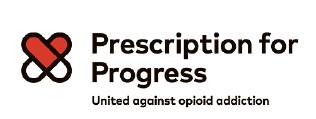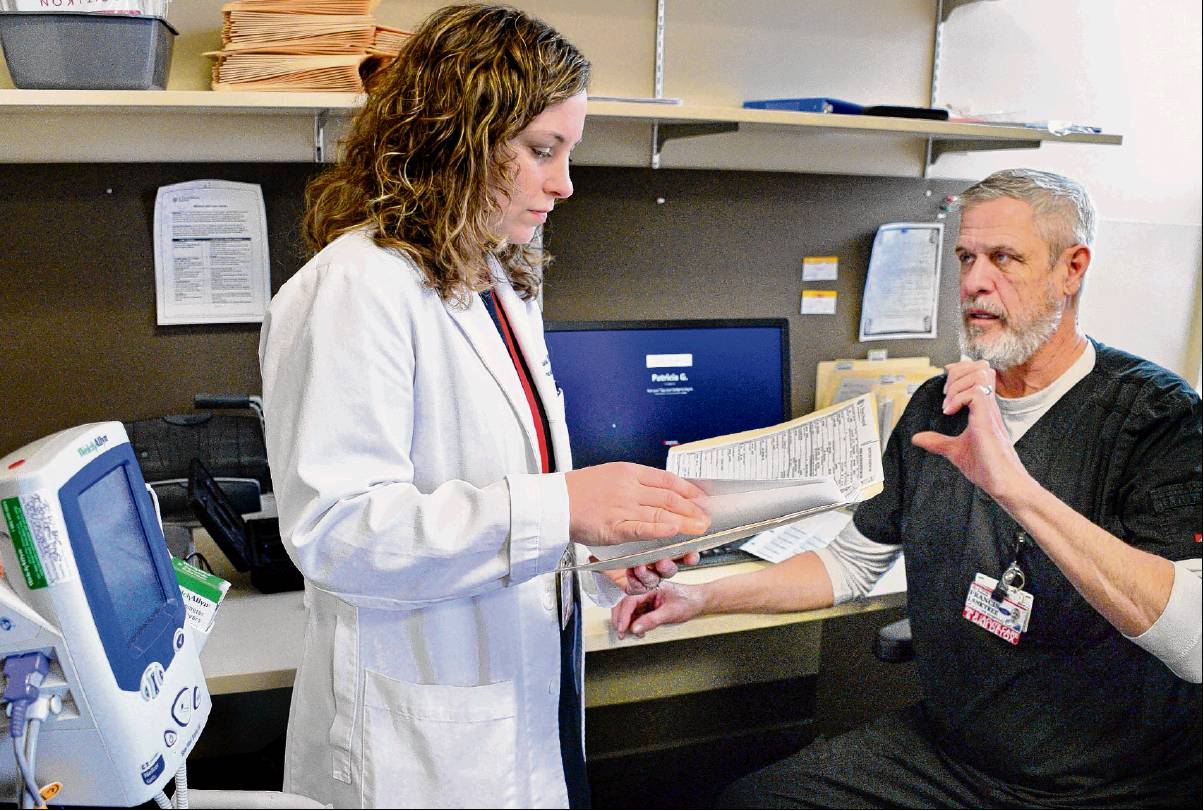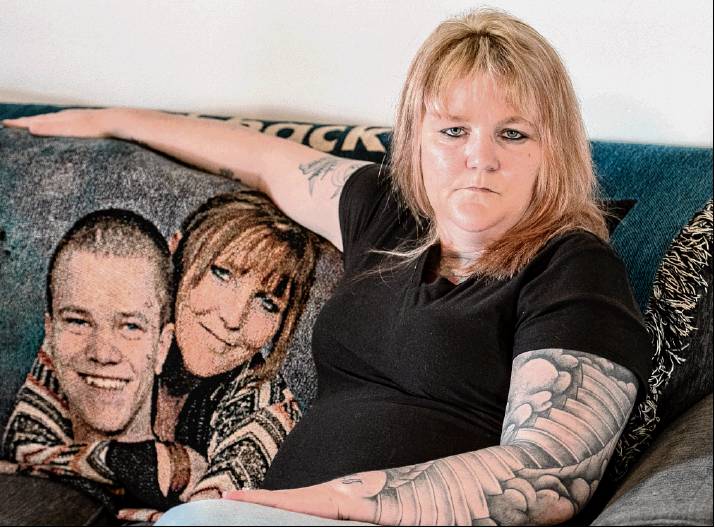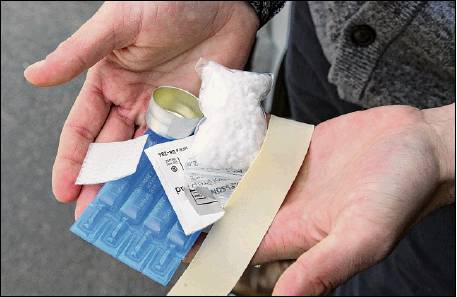Confronting a cruel, lethal tide
Addiction’s human toll is chilling, and treatment can be hard to find. But new responses and changing attitudes offer hope.
By Bethany Bump and Claire Hughes
On that first day at the hospital, her son hooked to a ventilator, Tracy Minor was furious. Her son. Her stupid, stupid, lovely, lovely, beautiful, stupid son. Why did he keep doing this to her?
The Stillwater native pulled out her phone and took his photo — the respirator, the tubes, the hospital gown falling off of one shoulder. Stupid boy, she thought. When you wake up, she thought, snapping more photos, I’m going to show you what a jerk you’ve been, how scared you had your family.
Because she was scared. The doctors had found the young man outside the front door of Ellis Hospital on a cold autumn night. Someone had left him there, passed out on drugs. His wallet was gone. She would later learn his friends stole it, along with everything else of value on 20-year-old McKinley David Desnoyers as he was going into acute cardiorespiratory failure.
“The amount of opiates in his system was enough to tranquilize a horse,” the doctors would later tell her.
Her sweet boy. His bright blue eyes. His always-present smile. The way he hurt on the inside but you’d never know it from the outside. She wouldn’t know it until she smelled the alcohol on his breath at 16, until a foot operation a year later left him jonesing for hydrocodone, until he was crying and promising he’d stop using drugs. He promised, he swore, “I’ll get it together, Mom.”
When he wakes up, Minor thought, stroking his head, day two on a ventilator, he’ll go to rehab. He’d been on a waiting list for three months. A bed in Utica, she’d recently learned, would be available the next week. Soon, she thought. He had a 3-year-old boy and a fiancee. His real life would start soon.
He looks the same, she thought on day three. He’ll be OK. He’d been in and out of emergency rooms a half dozen times over the past year after overdosing or coming close. That’s enough already, she thought. Wake up. And she crawled in his hospital bed and she sang him a song.
The critical care doctor came on day four. She had tears in her eyes.
On day five, McKinley’s face began to swell. His kidneys were shutting down.
When the hospital staff had found him five days earlier, McKinley’s body had been deprived of oxygen for 45 minutes. They shocked him three times. They gave him five doses of naloxone — a drug that reverses the effects of an opiate overdose if administered in time.
“He would have had a better chance if they had pushed him into a ditch, called 911, and tossed the phone in before fleeing. That’s what they told me,” Minor said, two and a half years later, her arms tattooed with her son’s birthday, handwriting, and the date of his death: Nov. 10, 2015.
A pandemic
The death toll keeps rising.
Overdoses from heroin, fentanyl and other opioids have risen steadily over the last decade statewide, with a 120 percent increase between 2012 and 2016 for deaths outside New York City. Nationally, a 21 percent rise in drug overdose deaths in 2016 made accidental injury the third leading cause of death in the country, and the No. 1 killer of Americans under 50.
The overdose epidemic — many now call it a pandemic — has even reduced the life expectancy of Americans by a few months, to 78.6 years, according to federal health officials.
The numbers keep getting bigger — 1,879 deaths outside of New York City in 2016 — but they don’t really say much. They don’t reveal the hopes of a young man or woman who got hooked on prescription painkillers, then moved on to cheaper, more potent heroin or the man-made fentanyl, said to be 50 to 100 times as strong. Or the grief of their parents. Or the confusion of their children, now being raised by grandparents or in a foster home.
It’s not that no one’s doing anything. In the four and a half years since the Times Union first wrote a story about a rise in heroin use and overdose deaths, and the spread of opioid abuse into the suburbs and middle classes, there have been multiple efforts to combat the scourge. State efforts have included safer opioid prescribing through the I-STOP prescription monitoring program, increased availability of the lifesaving overdose reversal medication naloxone and access for heavy users to treatment with medications like methadone and buprenorphine.
Among the most conspicuous changes is a grassroots effort to fight the stigma of addiction that blocks people from admitting they need help. More people are talking about their problem in recent years, without shame. With a growing understanding of addiction as a disease that affects brain chemistry, rather than a weakness of character, recovering addicts and families who’ve lost loved ones are speaking out publicly, working to educate or advocate.
Getting help
And still, every month, the death toll keeps rising.
Lots of people still are not getting help to overcome their addictions. National estimates are that only 10 to 20 percent of people suffering from addiction get treated. Acknowledgement of that problem in New York has led to funding more inpatient treatment beds as well as outpatient slots.
Yet local addiction experts say one essential obstacle remains as firm as it’s ever been: in that sliver of time when someone with a substance use disorder is ready for help, there are still too many barriers to getting it. Same-day treatment is almost unheard of.
That is sometimes still due to the lack of an available inpatient treatment bed, which is now more often caused by a dearth of staff than the actual lack of a bed, treatment providers said.
But it’s also because drug users get turned away from medical facilities that are not specifically designated to treat them, patient advocates said. Consider the person who, sick from withdrawal symptoms and wanting to avoid the easy fix — more heroin, fentanyl or pills — finds their way to a hospital emergency room. Historically, they’ve been turned away, because many are not state-certified addiction facilities.
This is why McKinley only ever found himself in an emergency room when he’d gone too far with the drugs, his mom said. They were never willing to help when he was safe and ready to stop.
To help address this, the state this spring announced it would grant these facilities temporary waivers to expand their detox services, so long as they informed the state of any expansions.
This spring, the state Department of Health and Office of Alcoholism and Substance Abuse Services announced it would provide a temporary waiver expanding the detox services they can provide.
When someone addicted to opioids doesn’t get help, the quickest way out of pain is more dope.
The issue for McKinley’s family, then, was keeping him alive until he could get help. But they were scared. There was a moment three months before his death — after he overdosed while walking down a road and hit his head on a rock, after he’d slept for four days straight not aware he was severely concussed, after his mom took him to the hospital and he was discharged — that McKinley was ready.
“I’m all done with drugs, Mom, I’ll all done with drinking,” he told her. “I’m done. This is it. I’m going to start my life.”
So she called and got him on the waiting list.
Keeping them alive
A number of innovative efforts are seeking to seize that moment when a person is ready for help —or at least, in the face of a spiraling death count, keep people alive until that moment arrives.
Perhaps surprisingly, some of these programs have been launched by law enforcement officials seeking to reframe the current illicit drug problem as a public health issue rather than a criminal one. At the Albany County Jail, the Sheriff’s Heroin Addiction Recovery Program, launched in 2015, has partnered with the Addiction Cares Center of Albany to offer drug treatment to inmates. The city of Albany’s Law Enforcement Assisted Diversion program gives police the option of calling a case manager instead of arresting someone on drug charges. In Columbia County, police officers in the village of Chatham will find a treatment bed for anyone who walks into their department ready to quit drugs.
The newest medical approach may be at St. Peter’s Health Partners, where drug users addicted to heroin, fentanyl and other opioids can now walk into outpatient locations in Albany, Troy and Cohoes or emergency departments at Samaritan, Albany Memorial and St. Peter’s hospitals and promptly be evaluated to get buprenorphine to help them through withdrawal, or more intense detox services if needed. The program has served more than 300 people since it opened last September.
“When the person feels, ‘I am able to change in this moment,’ we are ready to treat them in this moment,” said Dr. Melissa Weimer, medical director of the SPHP Addiction Recovery Center. “We’re trying to make it so there’s no closed door.”
Reducing harm
Many overdoses, of course, occur because a heavy drug user has not reached that treatable moment. In a crisis of deaths, there is renewed urgency around harm-reduction efforts that seek to reduce deaths and the spread of disease without requiring that a drug user quit.
With support from the state Health Department, the Albany-based syringe exchange program Project Safe Point has become a “drug user health hub.” When police arrive at the scene of an opioid overdose, they administer the reversal drug naloxone and then provide information on the user to Project Safe Point, a project of Catholic Charities Care Coordination Services. A day or two later, Project Safe Point staff contact the user with offers of assistance. They might provide naloxone, clean syringes, peer support or, if a user is ready, treatment referral.
“Not everybody’s ready for treatment in the moment, but that doesn’t mean there aren’t things we can offer them,” said Project Safe Point Program Manager Joseph Filippone.
A more radical harm-reduction proposal was introduced in the state Assembly in January. It would allow facilities where drug users can inject heroin, fentanyl and other illicit substances under medical supervision, without fear of arrest. In addition to reducing overdose deaths and the spread of disease, so-called safe consumption spaces aim to cut back on the public nuisance that goes with drug use, like dirty needles left in parks or drug users injecting in public bathrooms. In other countries where they operate, including Canada and several European nations, supervised injection sites are often connected to treatment services.
“When the person feels, ‘I am able to change in this moment,’ we are ready to treat them in this moment. We’re trying to make it so there’s no closed door.”
Dr. Melissa Weimer, medical director of the SPHP Addiction Recovery Center
“When you create an environment like that, you have a much more fertile ground for people to get help than you would otherwise,” said Keith Brown, director of health and harm reduction at the Katal Center for Health, Equity and Justice in New York City.
Opponents refer to the sites pejoratively as “heroin shooting galleries” and say they will only worsen the problem by condoning drug use. But proponents say they provide a chance for drug users to establish trust with people who can ultimately provide them help when they’re ready — and that it’s time to establish them in face of soaring deaths. No one has ever died in a safe consumption space.
Minor doesn’t know what she could have done differently. Every day, she asks herself that. Every day, she veers between wondering if she didn’t help him enough or if she helped him too much. The family of an addict never really knows.
She’s moved to a new house. Her son’s smile — that gleam of teeth — shines from every surface: the fridge, the sills, a poster board, an afghan. She goes to work. She comes home. She keeps the blinds down, the curtains drawn.
She bought a Pomeranian. She wonders why she’s still living. Then she looks at a portrait of her grandson by the window, the boy with her son’s smile, and her eyes brighten.




